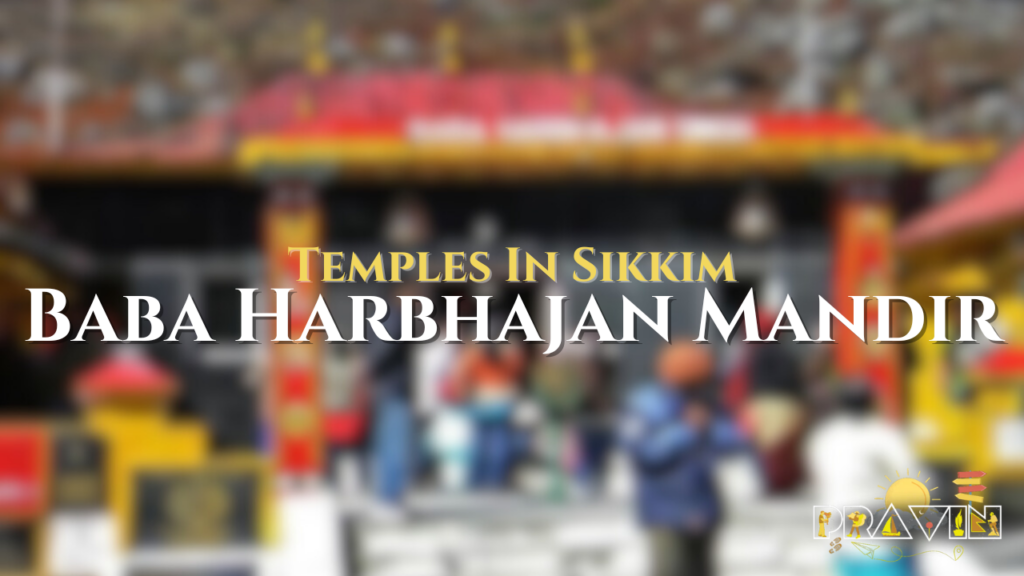Baba Harbhajan Mandir in Sikkim is one of the many hidden gems the state has. Also known as Baba Mandir, this temple is dedicated to Baba Harbhajan Singh, a soldier of the Indian Army who is revered as the “Hero of Nathula.” On my previous visit to East Sikkim, I had to visit this revered shrine that the locals of Sikkim had told me about.
In this blog, I share my experience of the time I visited Baba Harbhajan Mandir in Sikkim and all the stories that I have heard about the place.
Location Of Baba Harbhajan Mandir
The Baba Harbhajan Mandir is located between Nathula Pass and Jelep La Pass in East Sikkim. The temple is situated at an altitude of 13,123 feet, between the snow-capped mountains and amazing landscapes. This strategic location near the India-China border adds to the significance of the temple.

Height of Baba Harbhajan Mandir in feet – 13,123 feet
How To Reach Baba Harbhajan Mandir
If you are planning on going to Baba Harbhajan Mandir, you have to reach Gangtok first. Gangtok is well-connected by road and can be reached from various parts of Sikkim and West Bengal.
The nearest airport is Bagdogra, and from there, you can take a taxi or a shared cab to Gangtok. From Gangtok, you can hire a taxi or join a tour to reach Baba Mandir, which is about 52 kilometers from the city. The journey involves a scenic drive through rugged terrain and offers spectacular views of the Himalayas.
What Is The Main Attraction Of Baba Harbhajan Mandir?
The main attraction of Baba Harbhajan Mandir is the shrine dedicated to Baba Harbhajan Singh, who is believed to protect soldiers in the region. The temple houses a portrait of Baba Harbhajan Singh along with his personal belongings. Devotees come to seek blessings and pay homage to the soldier-saint who is said to safeguard them from any harm.

Baba Mandir Height in Feet
Baba Mandir, located near Nathula Pass in Sikkim, sits at an impressive height of 13,123 feet above sea level. This shrine is dedicated to Baba Harbhajan Singh, a soldier in the Indian Army who is revered as a saint. The temple’s high altitude, surrounded by breathtaking landscapes and serene mountain views, adds to its spiritual significance. For travelers, the journey to Baba Mandir offers not only a religious experience but also a glimpse of Sikkim’s mesmerizing natural beauty.
Old Baba Mandir Height in Feet
The Old Baba Mandir, situated at an elevation of around 13,450 feet, is the original temple built in honor of Baba Harbhajan Singh. This older site is located closer to the area where Baba’s bunker was discovered, giving it a deep historical and spiritual value. Though less visited than the newer temple, the Old Baba Mandir is a place of quiet reflection, offering a closer connection to the legend of the soldier-saint in the midst of Sikkim’s rugged terrain.
Baba Harbhajan Mandir Architecture
Here’s an overview of the architecture and features of Baba Harbhajan Mandir:
Architectural Style
- Simple and Modest: The architecture of Baba Harbhajan Mandir is simple and modest, reflecting the humble life of Baba Harbhajan Singh. The temple structure is built using local materials and traditional designs.
- Functional Design: The temple is designed to accommodate devotees and provide a peaceful environment for prayer and reflection.
Structural Elements
- Main Shrine: The main shrine houses the portrait and personal belongings of Baba Harbhajan Singh. It is the focal point of the temple, where devotees offer their prayers.
- Memorial Rooms: The temple complex includes rooms that display the uniforms, boots, and other items used by Baba Harbhajan Singh. These items serve as a reminder of his dedication and service.
- Entrance and Courtyard: The temple features a simple entrance leading into a well-maintained courtyard. The courtyard offers a space for devotees to gather and perform rituals.
Decorative Elements
- Minimalist Decor: The temple’s decor is minimalist, focusing on the spiritual presence of Baba Harbhajan Singh rather than elaborate decorations.
- Photographs and Memorials: The walls of the temple are adorned with photographs and memorials depicting the life and service of Baba Harbhajan Singh.
Baba Harbhajan Mandir Information
Baba Harbhajan Mandir holds significant spiritual value for the locals and soldiers stationed in the region. It is believed that Baba Harbhajan Singh continues to protect the soldiers at the border, and many miraculous stories are associated with his presence. The temple is not only a place of worship but also a symbol of bravery and devotion.
Best Time To Visit Baba Harbhajan Mandir
The best time to visit Baba Harbhajan Mandir is during the summer months from April to June and the autumn months from September to November. During these months, the weather is pleasant, and the roads are accessible. The temple is also covered in snow during the winter months, providing a different but equally beautiful experience. However, the roads may be treacherous in winter, so caution is advised.
Baba Harbhajan Mandir History and Local Beliefs
Baba Harbhajan Singh was a soldier in the Indian Army who died in 1968 near Nathula Pass. According to local legends, he appeared in the dreams of his fellow soldiers and instructed them to build a shrine in his honor. It is believed that his spirit continues to guard the border and protect the soldiers. The temple was built to honor his memory and to provide a place for devotees to seek his blessings.
Rituals and Traditions at Baba Harbhajan Mandir
- Daily Prayers: Daily prayers and rituals are conducted at the shrine, attracting many devotees.
- Special Ceremonies: On special occasions like the death anniversary of Baba Harbhajan Singh, elaborate ceremonies are held.
- Offerings: Devotees often leave offerings of food, water, and other items, believing that Baba Harbhajan Singh continues to protect and bless them.
Local Legends and Stories
Baba Harbhajan Singh’s Spirit
It is widely believed that Baba Harbhajan Singh’s spirit patrols the borders and protects the soldiers from danger.
Miraculous Appearances
Many soldiers have reported seeing Baba Harbhajan Singh appear in their dreams to warn them of impending dangers.
Visitor Tips
- Carry Warm Clothes: Due to the high altitude, it is advisable to carry warm clothes, even during the summer months.
- Travel Permits: Ensure that you have the necessary travel permits as the temple is located near the sensitive border area.
- Respect Local Customs: Visitors are expected to respect local customs and traditions while visiting the temple.
Nearby Attractions
Nathula Pass
Located close to Baba Harbhajan Mandir, Nathula Pass is a must-visit for its historical significance and stunning views. Nathu La Pass offers beautiful mountain views and has historical significance as a trade route between Sikkim and Tibet. Situated at high altitude, it provides visitors with panoramic vistas of snow-capped peaks and opportunities to learn about the cultural exchanges that have taken place along its ancient path.
Tsomgo Lake
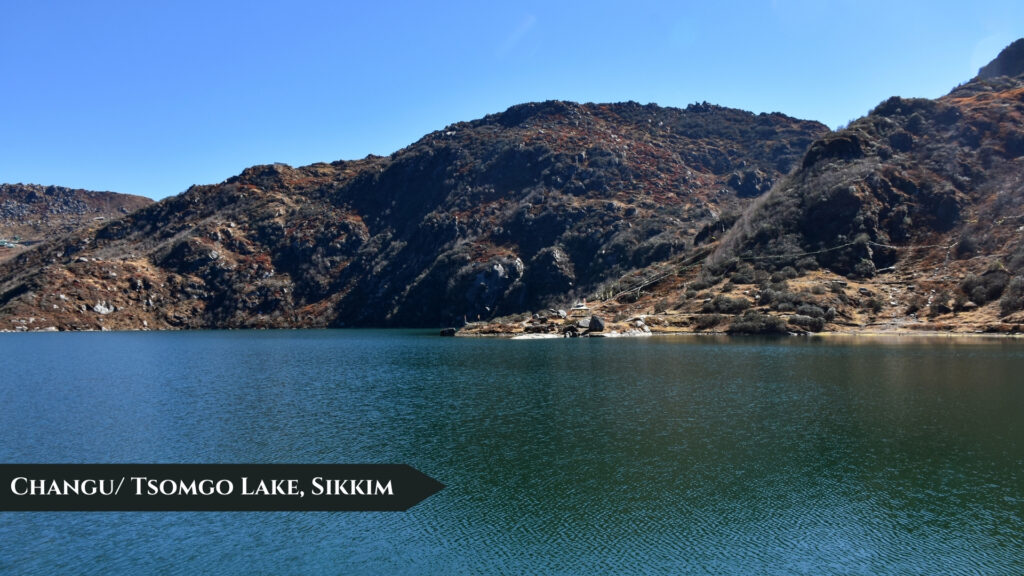
Another popular attraction nearby, Tsomgo Lake is known for its scenic beauty and tranquil environment. Tsomgo Lake, also known as Changu Lake, is a glacial lake situated in the peaceful landscapes of East Sikkim. Surrounded by steep mountains and surrounded with colorful prayer flags, this sacred lake holds great significance for both locals and visitors alike, offering amazing views and a peaceful ambiance for reflection and relaxation.
Other Temples In Sikkim
Here below, I have added some other famous temples in Sikkim that you can look forward to visiting. I have a blog dedicated to famous temples in Sikkim that covers almost all the temples of the state.
Ganesh Tok

Ganesh Tok is a small but significant temple dedicated to Lord Ganesh. Offering panoramic views of Gangtok and the surrounding mountains, this temple is a peaceful spot for devotees and tourists to seek blessings and enjoy the natural beauty of Sikkim.
Hanuman Tok

Situated in rich forests, Hanuman Tok is a reputed temple dedicated to Lord Hanuman. Visitors can climb the stairs to the temple and marvel at the amazing vistas of Gangtok and the Himalayas, making it a popular destination for spiritual seekers and nature enthusiasts alike.
Thakurbari Temple
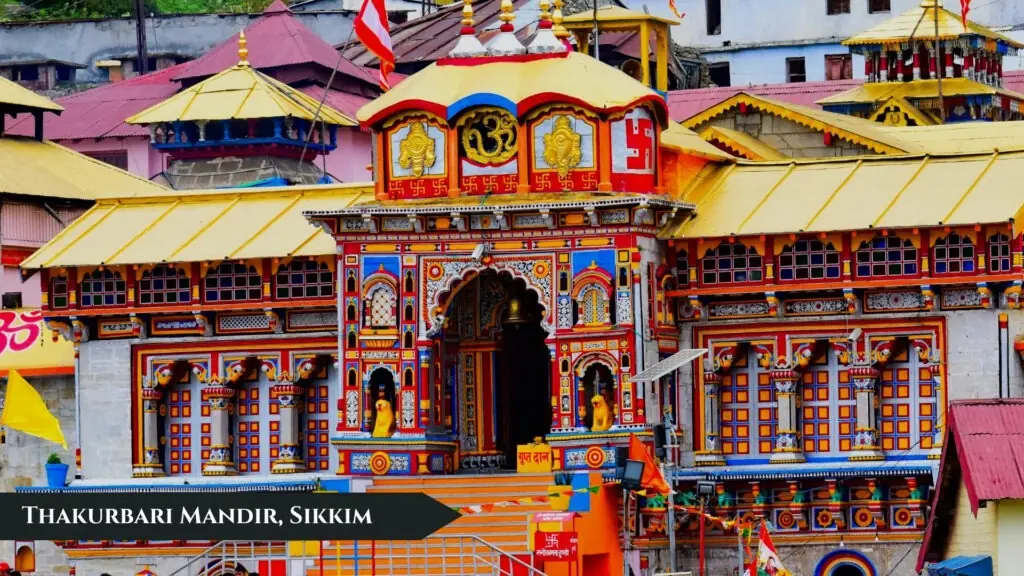
Thakurbari Temple is a prominent Hindu temple in Sikkim dedicated to Lord Krishna. Known for its beautiful architecture and peaceful surroundings, the temple is a place of worship and pilgrimage for devotees from across the state and beyond.
Kirateshwar Temple
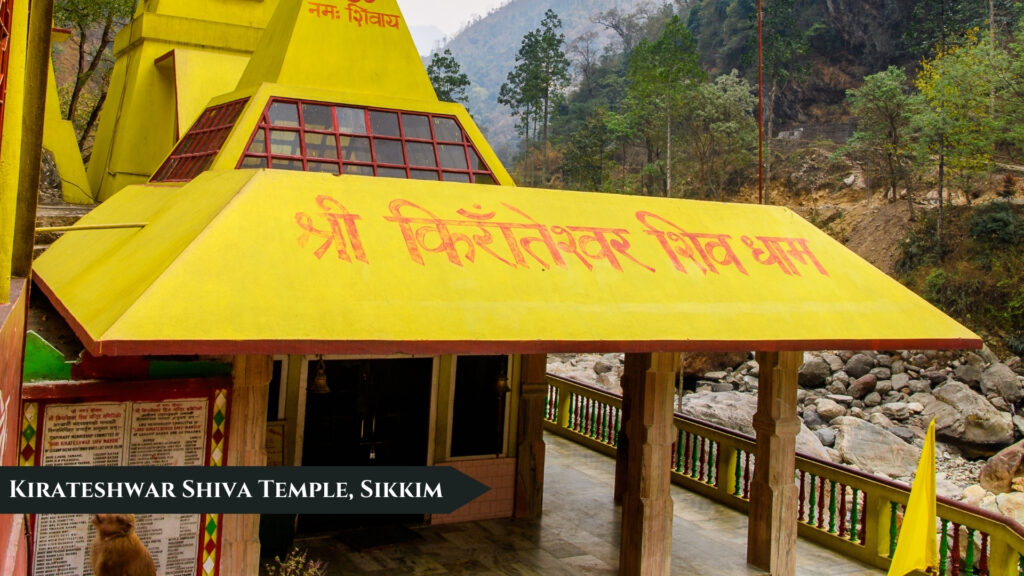
Kirateshwar Temple is dedicated to Lord Shiva and is believed to be the spot where Arjuna, from the Mahabharata, received the divine weapon, Pashupatastra. Surrounded by rich greenery and overlooking the confluence of two rivers, this temple holds great religious significance and attracts devotees seeking blessings and solace.
Vishwa Vinayak Temple

Vishwa Vinayak Temple is a reputed shrine dedicated to Lord Ganesha, the remover of obstacles. Situated in peaceful surroundings, the temple provides devotees with a peaceful space for prayer and reflection, as well as stunning views of the surrounding mountains and valleys.
Samdruptse Temple
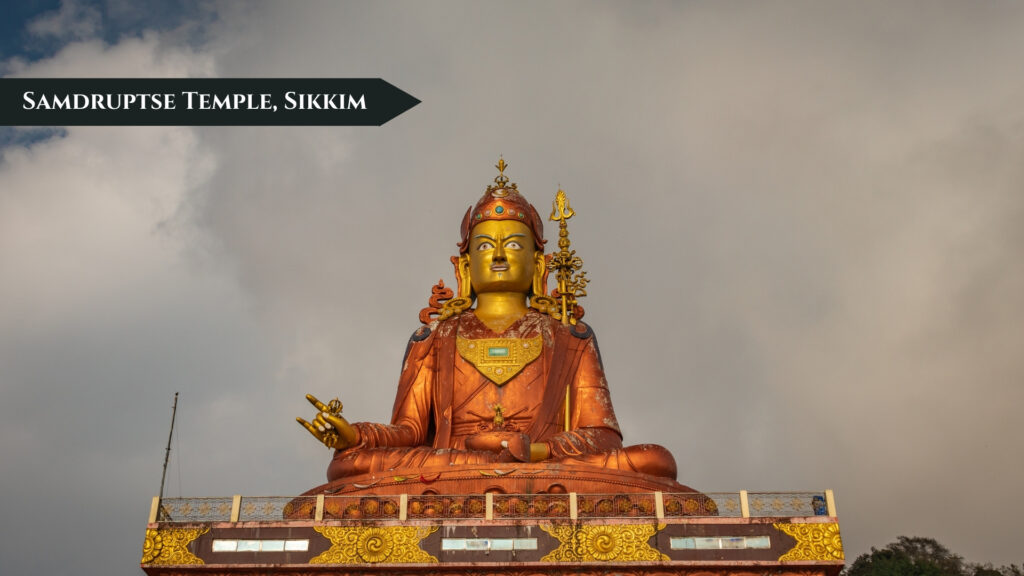
Samdruptse Temple is home to the high statue of Guru Padmasambhava, also known as Guru Rinpoche, who is reputed as the patron saint of Sikkim. Perched on top of a hill, the temple offers panoramic views of the Himalayas and serves as a spiritual beacon for devotees and visitors alike.
FAQs Related To Baba Harbhajan Mandir
What is the significance of Baba Harbhajan Mandir?
Baba Harbhajan Mandir is a significant shrine dedicated to Baba Harbhajan Singh, a soldier who is believed to protect the soldiers at the India-China border.
Where is Baba Harbhajan Mandir located?
The temple is located between Nathula Pass and Jelepla Pass in East Sikkim, at an altitude of 13,123 feet.
What is the best time to visit Baba Harbhajan Mandir?
The best time to visit is during the summer months (April to June) and autumn months (September to November) for pleasant weather and accessible roads.
How can one reach Baba Harbhajan Mandir?
The temple can be reached via road from Gangtok, which is about 52 kilometers away. The nearest airport is Bagdogra in West Bengal.
Is there an entry fee for Baba Harbhajan Mandir?
No, there is no entry fee for visiting the temple.
What facilities are available for visitors at Baba Harbhajan Mandir?
Basic facilities such as restrooms and a resting area are available. Additionally, nearby shops provide refreshments and religious offerings.
Are there any special rituals performed at Baba Harbhajan Mandir?
Special prayers and rituals are conducted daily, with grand ceremonies on special occasions like the death anniversary of Baba Harbhajan Singh.
Is photography allowed inside Baba Harbhajan Mandir?
Photography is generally allowed in the temple premises, but it’s advisable to check with the temple authorities regarding any specific restrictions.
What should one carry while visiting Baba Harbhajan Mandir?
Visitors should carry warm clothes due to the high altitude and potentially chilly weather.
Are there any nearby attractions to visit along with Baba Harbhajan Mandir?
Yes, nearby attractions include Nathula Pass and Tsomgo Lake, both offering scenic beauty and historical significance.
Visiting Baba Harbhajan Mandir in Sikkim is a unique experience that combines spirituality with the rich history of the region. It’s a place where one can pay homage to a brave soldier and feel the peace and protection that his presence is believed to bring. Refer to my YouTube for more travel updates.
Happy travels.

